By Students of the Spring 2023 Capstone Studio: Community Planning course, San Jose State University, May 16, 2023
Over the past few decades, traditional street design in the United States has begun to shift. With increased demand for multi-modal transit, widespread efforts to reduce vehicle and pedestrian crashes, and goals for adaptations for climate change, the Complete Streets approach has entered into national and local policies and planning. The concept of a complete street includes designs and operations that prioritize safety and multi-mobility.
During the spring 2023 semester, students enrolled in San Jose State University’s Capstone Studio: Community Planning class, which is offered through the University’s Master of Urban Planning program, partnered with the City of San José to study the City’s East Santa Clara Street corridor, connect with active users and the surrounding community, and develop a set of recommendations for integrating a complete streets vision for the corridor. This article reviews the students’ planning process and outcomes.
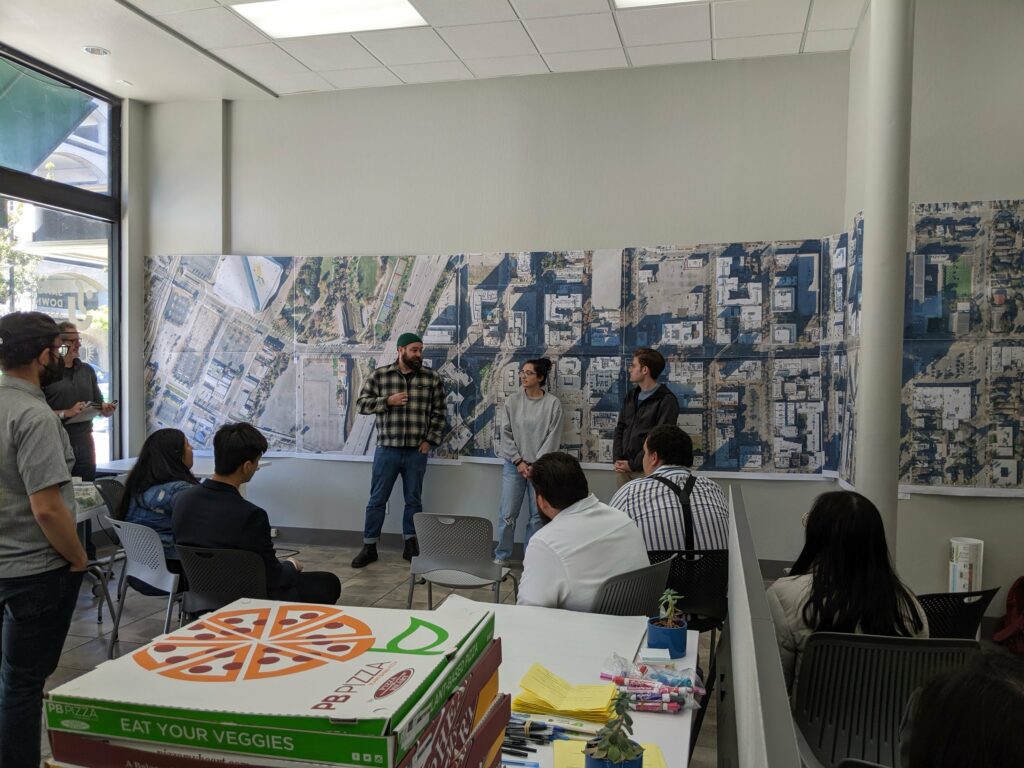
The City of San José has embraced the Complete Streets concept with tweaks based on context. The contextual approach allows for adaptability based on a street’s purpose for its highest users. This approach is necessary for roadways such as East Santa Clara Street, locally designated as a “Grand Boulevard.” 1
East Santa Clara Street is a transit corridor connecting the Almaden neighborhood to the Alum Rock Neighborhood while running directly through Downtown. Along the corridor, there are a number of notable destinations, such as the SAP Center, Diridon Station, San Pedro Square, and City Hall. Amongst the thousands of diverse residents, the downtown corridor is a highly trafficked section of San José. The Grand Boulevard designation encourages prioritizing transit and transit passengers on East Santa Clara Street. The designation includes bus lanes, high visibility crosswalks, bus stop shelters, wayfinding, outside furniture, and wide walking paths. 2
Capstone Class students organized planning activities into two phases: existing conditions (phase one) and visioning and recommendations (phase two). During phase one, students reviewed a litany of guiding documents, analyzed various data, including area demographics, crime activity, and accessibility, heard presentations from subject matter experts, and engaged the active corridor users through on-the-spot interviews. Students additionally had the pleasure of attending multiple walking tours with the City’s Department of Transportation staff to experience the corridor and learn about its past and future planning.
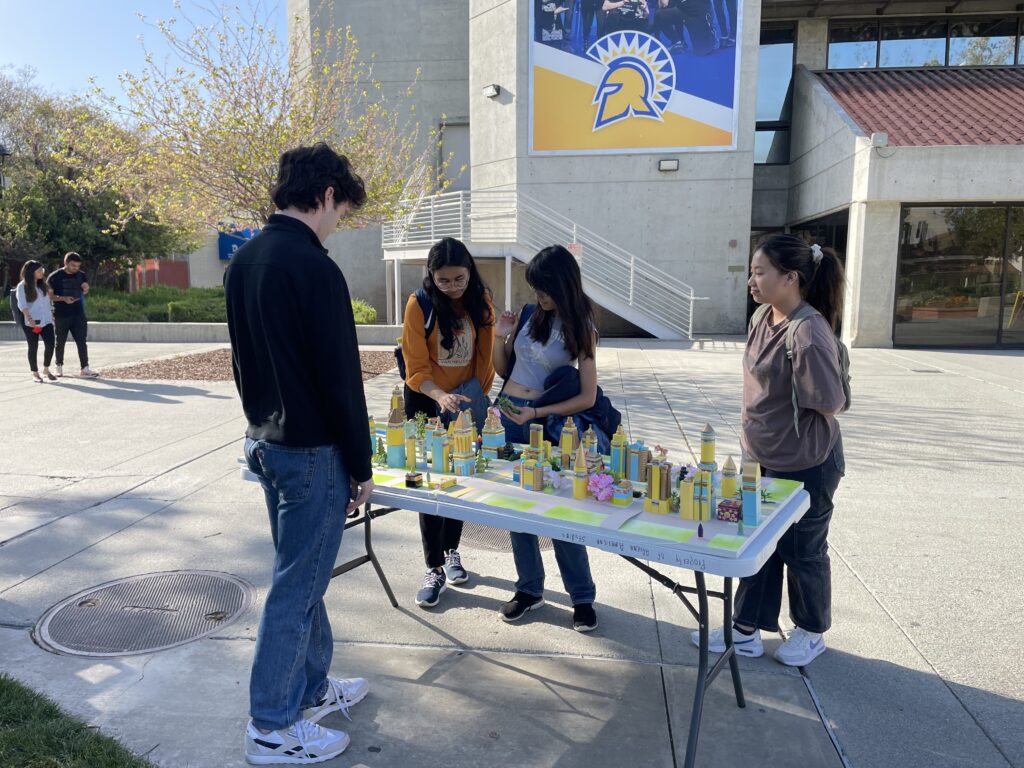
To better understand the complex facets of a complete street, various subject matter experts were conferred to share critical insights. For instance, one of the first presentations was from Adam Burger, innovation mobility & zero-emission bus program manager with the Valley Transportation Authority. Meeting with Adam was essential to learn about funding challenges, safety issues, creative solutions, and upcoming projects led by San José’s primary public transit provider. As a Grand Boulevard, a Complete Streets-aligned change would include prioritizing bus transit.
The class also heard presentations from the San Jose Downtown Association, SPUR, the Guadalupe River Park Conservancy, community engagement expert James Rojas, and staff and members of Recovery Café, a center for those traumatized by addiction, homelessness, and mental health.3 Furthermore, some students were able to interview Michele Mashburn, a local disability advocate, to learn more about current accessibility challenges along the corridor and opportunities to improve accessibility. Hearing from community engagement experts, local non-profits, advocates, city staff, and corridor users allowed students to envision and experience the corridor from multiple viewpoints.
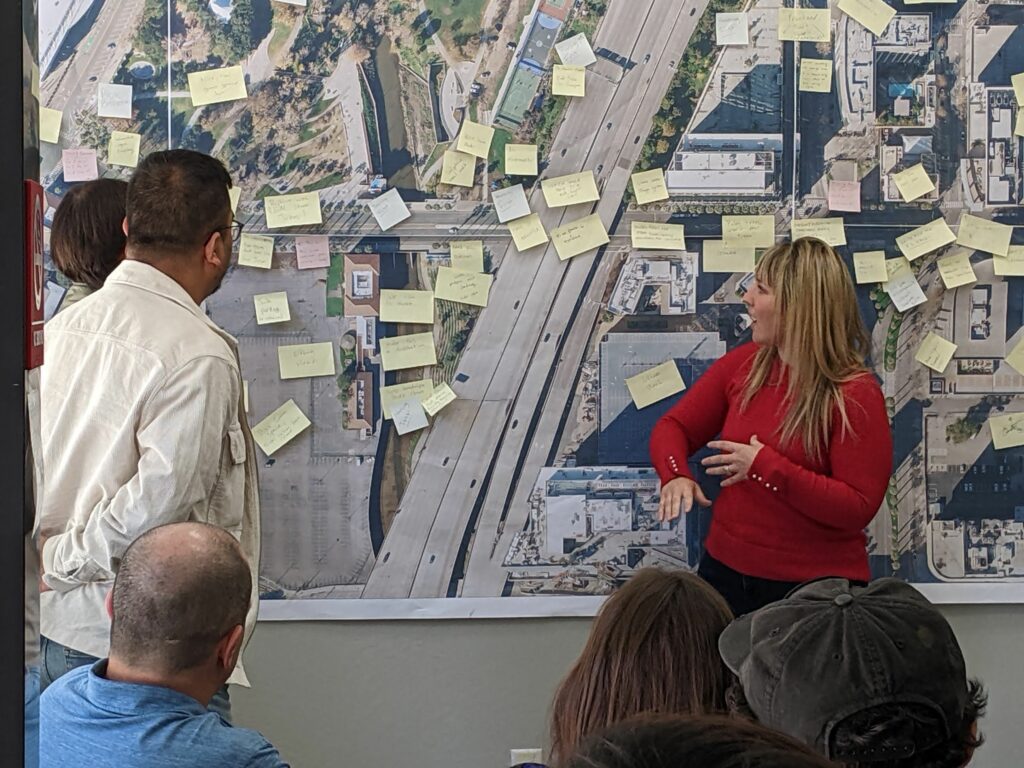
As a unique learning opportunity, the class reserved one Saturday to engage and embody the role of a stakeholder. Some stakeholder roles included homeless advocates, environmental advocates, artists, Downtown residents and Downtown Business Association members, bicyclists, and auto users. Acting as a stakeholder, students reviewed large photo overlays of the corridor with other stakeholders and made notes for future recommended changes. The acting role, while fun, also allowed the students to hear about other perspectives and think more deeply about their concerns. Through the process, students were able to effectively identify locations for a greater variety of street trees, public art, parklets, pedestrian crossings, and bike infrastructure.
For the final component of phase one, students engaged with the community through on-the-spot interviews along the corridor. The interviews took place at different times of the day and were varied throughout the week at different locations. Locations included VTA bus stops along the corridor, at City Hall, along San Pedro Square, and inside barber shops and other places of commerce. During the interviews, corridor users were asked how they use the corridor, their favorite places to visit, and the places they choose to avoid. Most of the corridor users were residents of San Jose and generally liked Downtown amenities, particularly the restaurants, nightlife, and entertainment. Additionally, strong themes from respondents arose around a lack of perceived safety, a desire for bike infrastructure, and a fear of gentrification.
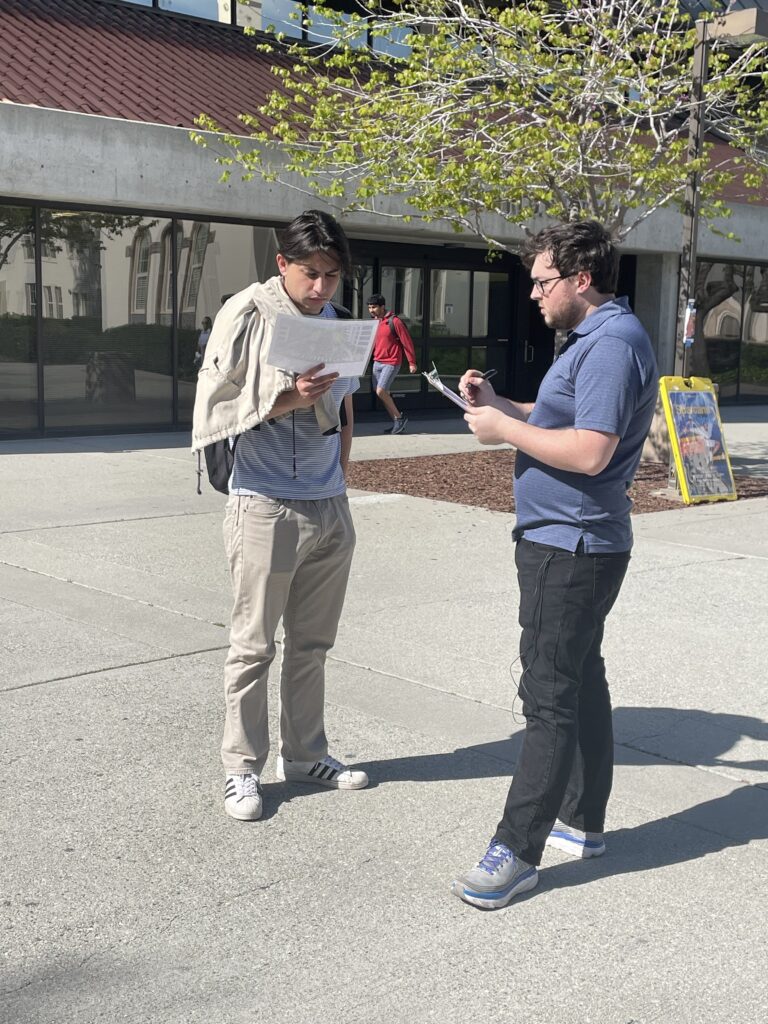
During phase two, each student completed a street audit using “Measuring Urban Design Qualities,” which includes a field manual and an audit sheet developed by the Active Living Research Program of the Robert Wood Johnson Foundation. The audit findings, combined with the previous research engagements, led the class to develop recommendations for adopting a Complete Streets approach to East Santa Clara Street. As bus markings and bike/pedestrian infrastructure had largely been designed for the “grand boulevard,” students focused on Complete Streets initiatives for the larger corridor context.
After completing the semester-long planning activity that included studying the corridor and connecting with active users, the class developed a set of recommendations for integrating a Complete Streets vision along East Santa Clara Street. Key recommendations included:
- Collaborate with the Santa Clara Valley Transportation Authority (VTA) to ensure both consistency and uniformity of VTA bus shelters, which provide adequate seating, sun relief, and functional wayfinding.
- Work with Sharks Sports and Entertainment, operators of the SAP Center, to identify interim and active uses for surface parking lots to reduce heat island effects and encourage greater mode shift for events at the SAP Center.
- Activate the space underneath Highway 87 with a “Small Business Incubator” or public plaza/park.
- Streamline the permitting process and lower associated fees for outdoor dining along the East Santa Clara Street corridor.
- Review design standards and Title 23 of the sign code to clarify the use of awnings, banners, and signs.
- Grind the pavement on East Santa Clara Street to reduce the street crown.
The students appreciate the participation and hard work of City of San José staff, local agencies, non-profits, consultants, numerous community members, and previous SJSU capstone classes who have developed substantial research, program initiatives, and feedback that work together to build a stronger, more inclusive community.
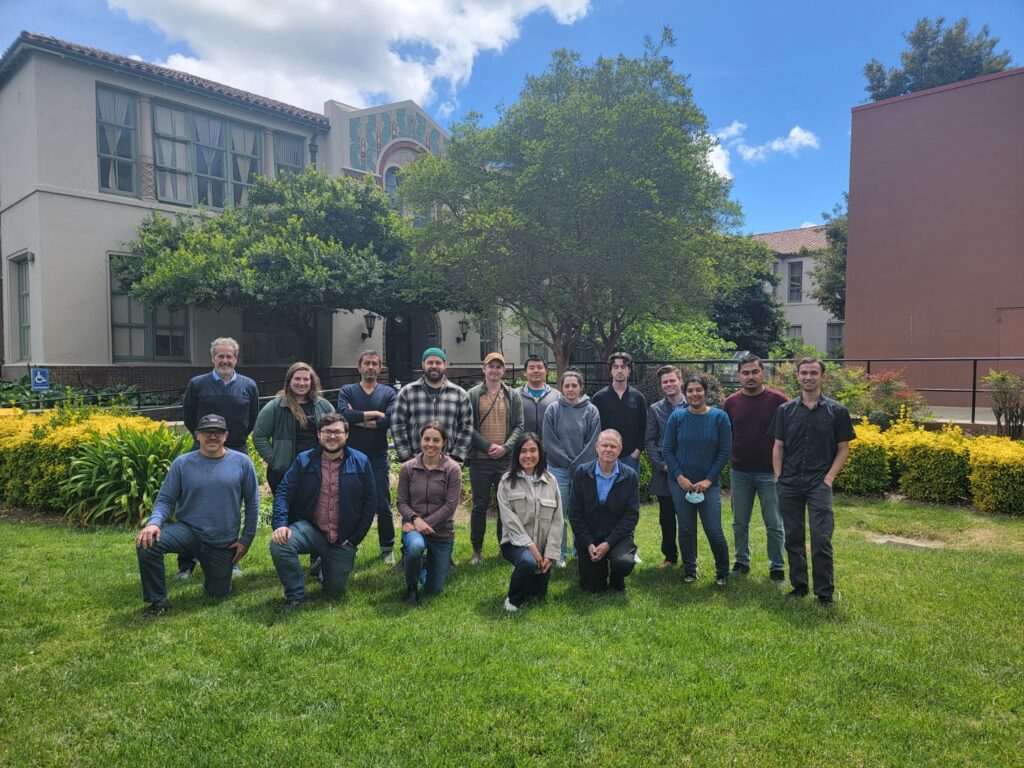
- City of San Jose. San Jose Downtown Transportation Plan, October 2022. 638040474240370000 (sanjoseca.gov), 46. ↩︎
- City of San Jose. San Jose Downtown Transportation Plan, October 2022. 638040474240370000 (sanjoseca.gov), 46. ↩︎
- Recovery Café, accessed May 9, 2023, Recovery Cafe San Jose | A Place to Belong & Grow (recoverycafesj.org). ↩︎
